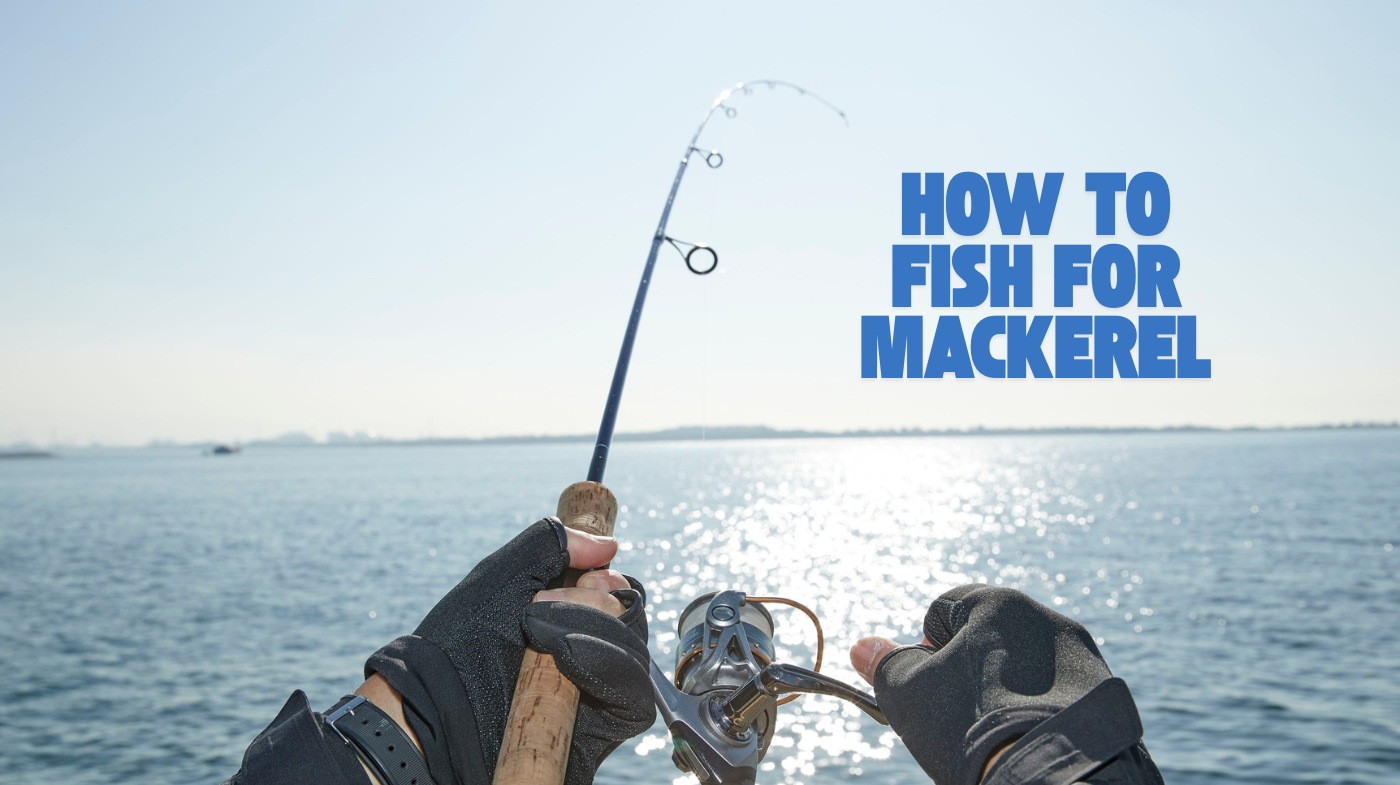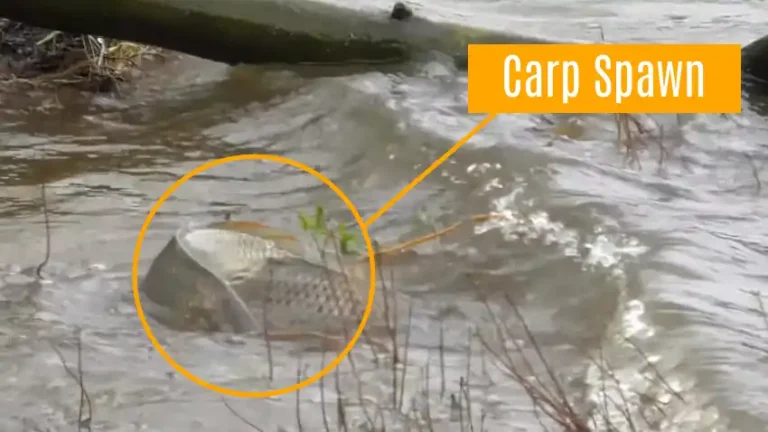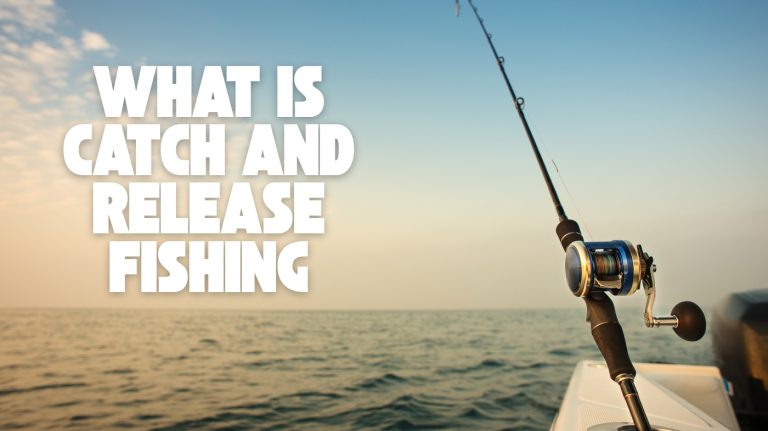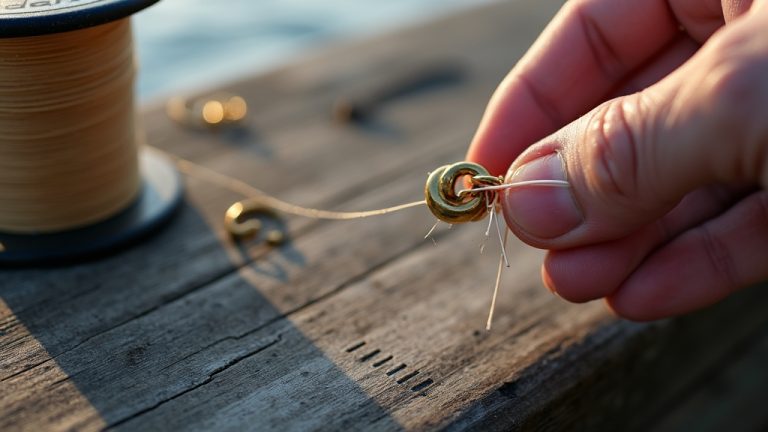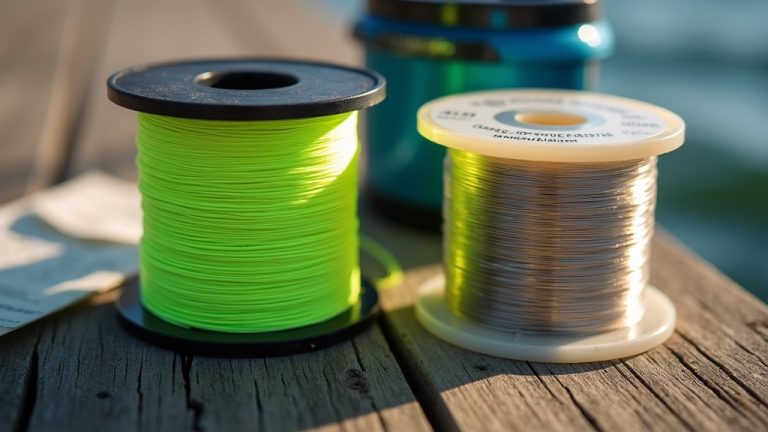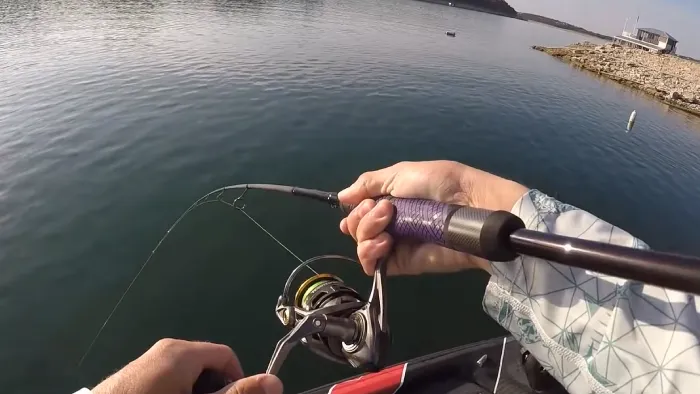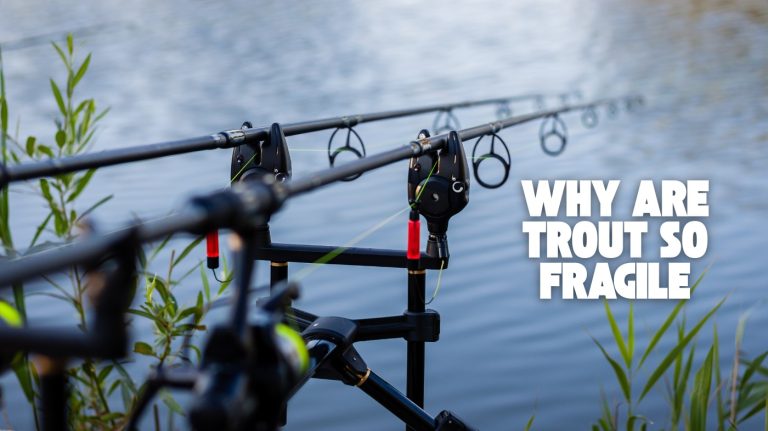How to Fish for Mackerel? Essential Tips for Beginners
To fish for mackerel, use a lightweight rod with a spinning reel and 10-20 lb line paired with metal spoons, feathers, or sabiki rigs. Focus on coastal spots like piers or rocky ledges near baitfish, especially during dawn or dusk.
Cast or troll at 10–30 ft depths while watching for diving seabirds as natural indicators. Keep your line taut and mimic injured baitfish movement. Follow these basics, and you’ll be set to explore more advanced techniques and gear choices.
Key Takeaways
- Use a lightweight spinning rod (7-9 ft) with 10-20 lb monofilament or braided line and a smooth drag reel for mackerel fishing.
- Fish near coastal structures like piers, jetties, and rocky ledges during dawn or dusk when mackerel are actively feeding.
- Employ sabiki rigs, metal spoons, or feathered lures with fast, erratic retrieves to mimic wounded baitfish and attract strikes.
- Observe natural signs such as diving birds, surface splashes, and seals to locate schools of mackerel effectively.
- Use polarized sunglasses to reduce glare and enhance water visibility, improving casting accuracy and fish spotting.
Equipment and Gear Essentials for Mackerel Fishing
When gearing up for mackerel fishing, you’ll want a lightweight, flexible rod between 7 and 9 feet long to balance casting distance with control. Pair it with a medium to fast action to set hooks quickly. Consider using polarized sunglasses with advanced glare reduction technology to improve visibility of fish in the water.
Choose a spinning reel sized 3000 to 5000 with a smooth drag system and a high gear ratio (6:1 or above) for rapid line retrieval during fast strikes. Use monofilament lines rated 10 to 20 pounds for stretch and shock absorption. Proper selection of line significantly impacts fishing success and should be chosen carefully.
Alternatively, use braided lines for added strength and sensitivity when paired with fluorocarbon leaders to reduce visibility and abrasion. Wire leaders are essential for sharp-toothed species. Equip yourself with weights from 1 to 3 ounces to maintain proper bait presentation and ensure precise casting. Consider water depth when choosing weight and adjust accordingly for optimal results in different fishing environments.
Effective Shore Fishing Techniques
Although mackerel can be caught year-round, your chances improve markedly by fishing during calm weather at dawn or dusk, especially near piers, rocks, and cliffs where water depths range from 8 to 20 feet. Mackerel tend to feed during daylight hours, with peaks at dawn and dusk, and do not feed during darkness. Using natural bait and avoiding chemical attractants ensures a healthier fishing environment.
Focus your efforts during the middle of flood tides and watch for diving birds as natural indicators of mackerel presence. Use a sink-and-draw method with feathers or sabiki rigs, adjusting sink time progressively to target different depths.
Keep your line taut and apply small rod tip movements to mimic injured baitfish, enticing strikes.
- Cast sabiki rigs near seabed and retrieve with gentle rod lifts.
- Float fish at half water depth, moving the float side to side.
- Employ vertical jigging or rocking for realistic lure action.
- Use small shiny baits or chrome lures for attraction.
Boat Fishing and Trolling Methods
Shore fishing offers valuable techniques for targeting mackerel near the coastline. Heading out on a boat opens up access to larger schools and deeper water where these fish often gather.
Use sonar and bird activity to locate schools. Then drift with a sabiki rig, jigging vertically to mimic distressed baitfish. When trolling, deploy multiple lines with feathers or metal spoons at depths of 10–30 feet. Feathering works best during daylight in clear water, as the feathers’ shimmer attracts mackerel more effectively. Remember to use appropriate fishing gear maintenance to keep your equipment performing well during extended trips.
Use planer boards or downriggers to cover more area. Maintain steady speed and adjust depth based on sonar readings for best results.
| Method | Key Tips |
|---|---|
| Sabiki Rigging | Jig slowly; use 30 lb line |
| Trolling | Use planer boards; steady speed |
| Depth Control | Fish 15–30 ft; adjust as needed |
| Location Finding | Sonar, bird activity, GPS contours |
Choosing the Right Bait and Lures
Selecting the right bait and lures considerably boosts your chances of hooking mackerel, as these fish respond strongly to specific colors, movements, and presentations.
You want to match your gear to their natural prey and behavior for the best results. Silver, blue, and natural fish patterns work well, but bright colors can help in murkier waters.
Movement is key. Fast, erratic retrieves mimic wounded baitfish, triggering strikes. Brightly colored or flashy lures are especially effective because mackerel rely heavily on visual attention.
Key bait and lure choices include:
- Metal spoons and large spinners for flash and vibration
- Sabiki rigs with multiple small lures for covering water vertically
- Live or cut bait like slimy mackerel for natural scent and movement
- Soft plastic jigs and swimbaits in realistic colors for lifelike action
Adjust your presentations and maintain your lures regularly for suitable performance.
Tips for Locating and Handling Mackerel
When you’re searching for mackerel, focus on coastal structures like jetties, piers, and rocky ledges where baitfish gather. Mackerel feed nearby in these areas.
They typically arrive in Maine in late June and stay until early September, making this period ideal for targeting migratory schooling fish. Using a fishing line with high abrasion resistance can help when fishing near these rough structures.
Look for seabirds diving or seals feeding as natural indicators. Use sonar or watch for surface splashes to pinpoint schools. Handle mackerel carefully. Use circle hooks for better retention and cool fish on ice promptly to preserve quality.
| Location Type | Best Time | Signs to Watch For |
|---|---|---|
| Jetties & Piers | 2 hours before/after high tide | Diving seabirds, splashes |
| Rocky Ledges | Daylight or moonlit nights | Seals, fish strikes |
| Bays with strong currents | Seasonal migration periods | Fishing boat clusters |
| Wharfs | Early summer through fall | Chum trails, sonar marks |
Frequently Asked Questions
What Is the Best Time of Day to Fish for Mackerel?
The best time of day to fish for mackerel is early morning just after sunrise and late afternoon through dusk.
You’ll find mackerel feeding aggressively near the surface during these low-light periods, which reduces their fear of predators and boosts their activity.
Aim to fish during rising tides around dawn or dusk for the highest catch rates.
Avoid midday and nighttime since mackerel rely on sight and feed less actively then.
How Do Weather Conditions Affect Mackerel Fishing Success?
Weather conditions can make or break your mackerel trip. You’ll swear they vanish in bad weather!
When barometric pressure drops before storms, mackerel get frisky and feed enthusiastically, so fish then.
But rising pressure or heavy rain drives them deep or away, killing your chances.
Onshore winds and strong tides lure them closer, boosting success.
Keep an eye on temperature shifts too. Sudden chills slow them down, while warmth fires them up near the surface.
Can Mackerel Be Caught Year-Round or Are They Seasonal?
You can catch mackerel year-round, though their availability varies by region and species.
Atlantic and king mackerel fisheries remain open all year with regulations.
Pacific mackerel are most abundant from summer to fall in California but are present throughout the year.
Your success depends on local seasonal patterns, so check current reports and regulations.
Adjust your tactics with seasonal movements to maximize your catch no matter the time.
What Are Common Mistakes to Avoid When Fishing for Mackerel?
Imagine you’re trolling too fast past a mackerel school, and they dart away, spooked. A common mistake isn’t adjusting trolling speed; 5–7 knots works best.
Also, handle bait with wet hands. Dry hands leave black spots mackerel avoid. Avoid heavy leaders that reduce lure action, and rig your bait naturally.
These errors reduce strikes and catch rates, so mastering technique and presentation is key to successful mackerel fishing.
How Should Mackerel Be Stored After Catching to Maintain Freshness?
You should place mackerel on ice immediately after catching to slow spoilage.
Handle them gently to avoid bruising, then gut and clean within two hours.
Store gutted fish in a well-drained cooler with plenty of ice, keeping temperatures close to 32°F (0°C).
For longer storage, freeze cleaned, portioned mackerel in airtight packaging at 0°F (-18°C).
Thaw slowly in the refrigerator and consume within two days for best freshness.
Master Your Mackerel Fishing Techniques Today
Fishing for mackerel can be incredibly rewarding, especially when you know the right gear and techniques. Did you know mackerel can swim up to 35 miles per hour, making speed and movement vital in your lure choice?
Whether you’re shore fishing or trolling from a boat, using the proper bait and handling methods will boost your success. Stay patient, stay prepared, and you’ll enjoy plenty of exciting, fast-paced mackerel action.

